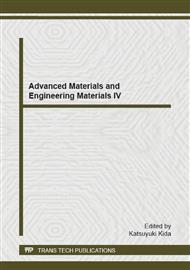p.152
p.169
p.173
p.177
p.182
p.187
p.191
p.197
p.202
Analysis of the Significant Influence Factors of Spray Quenching Process
Abstract:
In order to study thecharacteristics of this new type of quenching process that is atomized waterspray quenching, this article analyzes the influence factors of atomized waterspray quenching based on the newly developed aerosol spray quenching experimentdevice. Based on 2 method, the two factors of water flow and nitrogen pressureare controllable, we analyzed the influences of the two factors of nitrogenpressure and water flow to the quenching cooling time. This paper induces andanalyses the experiment results and numerical calculation results[1]. The conclusions are: water flow is the main factor ofaffecting the quenching rate, the interaction of the nitrogen pressure andwater flow is significant: when the nitrogen pressure is low ,the water flow ishigh, the quenching cooling rate is guaranteed.
Info:
Periodical:
Pages:
182-186
Citation:
Online since:
December 2014
Authors:
Price:
Сopyright:
© 2015 Trans Tech Publications Ltd. All Rights Reserved
Share:
Citation:


